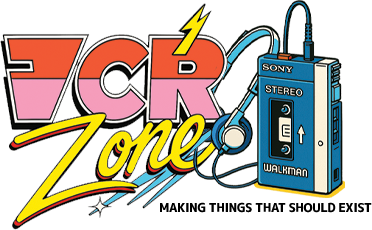How to Make VHS Tapes in 2025
VHS tapes might be obsolete, but they’re back in demand. People want them again — as collector’s items, as merch for bands and YouTubers, or just for the vibe of watching something on tape. It's really small scale but it's happening.
I run one of the biggest VHS duplication setups in the world and the only one left in the UK. I do wholesale runs and niche releases — YouTubers, bands, films. And every month, the demand for VHS keeps growing - something that seems to constantly surprise me.
Why are VHS tapes coming back?
The truth is VHS is worse quality. I wouldn’t recommend watching a modern film or anime for the first time on tape unless it was meant to look like that. It’s downscaled, soft, and unclear.
But VHS on a CRT TV has a feeling modern media doesn’t capture. People in their late 20s, 30s, and 40s remember it: the static, hum of the CRT, the analog buttons on the VCR, the way a VHS looks on a shelf and feels. They’ve become collector’s pieces. And because new tapes aren’t made anymore, every run is automatically limited edition. I think the slower pace of analog and the feeling it gives can be a great way to re watch stuff, or add a feeling to your physical space.
Can VHS tapes still be manufactured?
Not in the old way. The big VHS duplication factories are gone. The high-speed machines that pumped out tapes by the thousands don’t exist anymore and won’t ever come back. I’ve asked factories in China, and even they can’t make them again. People have told me even the technical knowledge of how isn't something easy to come by.
So in 2025, every VHS tape has to be recorded in real time. That means if your film is 90 minutes long, it takes 90 minutes to put it onto a tape.
How to make your own VHS tapes today
If you’re looking to create custom VHS tapes yourself, here’s the simple breakdown:
1. Artwork and packaging
-
Print sleeves on 350–400gsm card stock. Use the best printer you can get access to.
-
Labels: vinyl stickers custom cut to shape for the front and side label on the tape.
-
VHS sleeve/box templates are easy to find online. Once printed you will need to cut (I use a craft knife), score and glue (i use my own mix - half pva, half water and a little bit of soap).
2. Preparing your video for VHS
-
You can’t just copy a file straight onto a tape. It needs to be re-rendered for 4:3 CRT screens.
-
Options: crop it, add black bars, or do a pan-and-scan.
-
I use Adobe Premiere Pro with rendering presets I’ve developed over the last 4 years. What I recommend is to render it, test it on a CRT till you're happy then record.
3. Recording to tape
-
VHS duplication in 2025 means recording in real time. No high speed dubbing.
-
Play the video, record it onto the tape through the VCR (remember if you need PAL or NTSC).
- You'll also need a way to feed your re-rendered video into the VCR (via scart/or av leads). I've tried HDMI converters and capture cards, but my favourite to use is older video outputs like USB media players.
Why you might want to release something on VHS
If you’re a band, YouTuber, or indie filmmaker, VHS makes for unique merch. Every run I’ve done has sold out, because people love the rarity, feel and look. They haven’t been overdone, which makes them stand out.
Where to get VHS tapes made
There aren’t many places left that can handle custom whole product VHS manufacturing. But I can! and I’ve got pricing info in this FAQ. I also like working directly with people on projects — so if you’re looking to get tapes made, get in touch.

